 The Male Gaze:
The Male Gaze:
"the perspective of a notionally typical heterosexual man considered as embodied in the audience or intended audience for films and other visual media, characterised by a tendency to objectify or sexualise women."
- the man behind the camera- the male character- the male spectator
Background:
The first documentation of "the gaze" or "le regard" was introduced by the French philosopher Jean-Paul Sartre in 1943. He described it as "the act of gazing at another human creates a power difference, felt by the gazer viewing the gazed as an object rather than a human being."
The first use in cinema was by John Berger in 1972's "Ways of Seeing", where his theory stated that "men act and women appear", with women being aware of their obligation of performance towards the male viewer.
It most notably appears in Laura Mulvey's 1975 essay "Visual Pleasure and Narrative Cinema". In this essay, she states, "In a world ordered by sexual imbalance, pleasure in looking has been split between active male and passive female." (808), relating the representations of women and men in cinema to the patriarchal structure of society. These representations deny the post-feminist theory of agency, or a woman's control over her actions and body, dehumanising her and being viewed as a body rather than a person.
Psychology of the theory:
Mulvey based her essay on several Freudian psychoanalytical concepts:
Male Castration Anxiety: Upon viewing the woman, her lack of phallus poses the threat of castration to the male, and therefore displeasure. This unconscious anxiety of the male in turn leads to the over sexualisation and passive role of women onscreen, through voyeurism and fetishisation.
Voyeurism: The behaviour of looking as a sexual pleasure . Mulvey states it is about "asserting control and subjecting the guilty person through punishment or forgiveness." By viewing and fragmenting the female body, the anxiety of castration is reduced.
Scopophilia: The receiving of pleasure from looking, relating to the effects of the male gaze on both men and women. When the pleasure is derived from sexual attraction, it falls under the voyeuristic pleasure. However, when women view film from the male perspective, their pleasure is derived from self-identification and narcissism.
Narcissism: Receiving pleasure from the contemplation of one's self, in this case women identifying with their onscreen objectification.
Spectatorship:
When viewing a film, the viewer assumes the role of the active male or the passive female. Mulvey states that the male gaze consists of "three different looks"; the camera, the audience, and the characters. They all share the perspective of the active male viewer, relating to the concept of scopophilia or pleasure from viewing. This is in turn separated into two categories; voyeurism, where the subject is viewed from a distance and the viewer projects onto them, or narcissism, where the subject is recognised within it's viewer.
Due to this system of viewing, Mulvey believed women must identify with male characters and their perspective in order to enjoy films.
Onscreen, the male perspective is physically distinguishable in the camera's sight line and women are objectified to appeal to the male character, or male viewer. This is reinforced by the patriarchal hegemony (Gramsci), as well as other forms of media.
Rejection of the gaze:
Camille Paglia, a feminist academic writer, rejected the theory of the male gaze, by prioritising the post-feminist theory of agency. She says "I've been very vocal about my opposition to the simplistic theory of the male gaze... (it is) the victim model of feminism applied to the works of culture."
The female gaze was idealised later, with the idea consisting of a female assuming the position of the dominant male, and viewing through this perspective, removing the objectification of women.
Queering the gaze, consists of a same sex viewer and object, therefore queering the passive and active or male and female roles. However, this is also criticised by many feminist theorists, specifically regarding the lesbian gaze, referring to the fetishisation occurring from the heterosexual male.
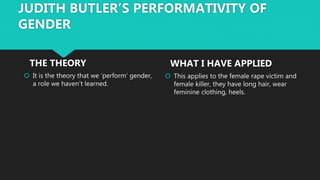
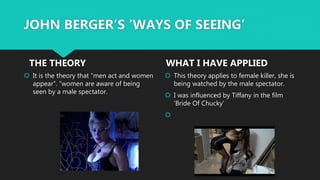



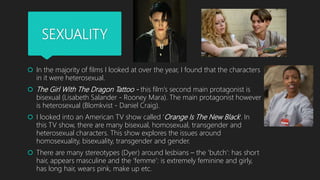
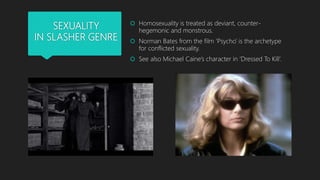






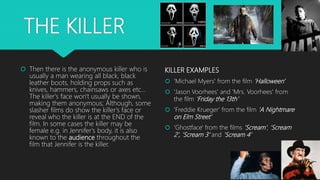
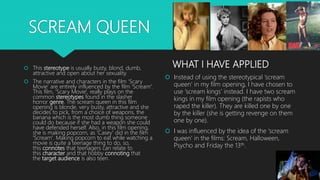

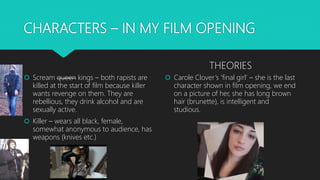


No comments:
Post a Comment